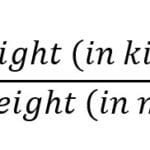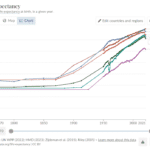Daily Sugar Intake Calculator – RDA for sugar intake
Sugar is everywhere. From your morning cereal to that mid-afternoon soda, sugar sneaks into our diets more often than we realize. But how much sugar a day is too much? Understanding your daily sugar intake is key to maintaining long-term health and preventing chronic diseases like obesity, diabetes, and heart conditions. This article breaks down the recommended daily allowance (RDA) for sugar, explores how sugar affects the body, and helps you calculate your own limit using tools like the Sugar Intake Calculator on Dietium.
Daily Allowance of Sugar Intake

What is Sugar? Natural vs. Added Sugar
Sugar is a type of carbohydrate that gives your body energy. It comes in many forms:
| Type of Sugar | Found In |
|---|---|
| Glucose | Most carbohydrates |
| Fructose | Fruits, honey |
| Sucrose | Table sugar (glucose + fructose) |
| Lactose | Milk and dairy products |
Natural Sugars are found in whole foods like fruits (fructose) and milk (lactose). These come with fiber, vitamins, and minerals, which help your body process them more efficiently.
Added Sugars are those added during processing or preparation, such as in cookies, soft drinks, and sauces. These offer little nutritional value and contribute to excess calorie consumption.
🧠 Did you know? There are more than 60 names for sugar on ingredient labels — like maltose, cane juice, agave nectar, dextrose, and high fructose corn syrup.

How Many Grams of Sugar Are in a Teaspoon?
Understanding how much sugar you’re actually consuming starts with a simple but crucial conversion:
1 teaspoon of sugar = 4 grams of sugar.
This tiny unit can be very deceiving. Many food labels show sugar in grams, but most of us visualize sugar in teaspoons. Knowing this conversion makes it easier to understand how quickly sugar adds up throughout the day.
Let’s look at a few real-life examples.
- A single can of soda contains about 39 grams of sugar. That’s nearly 10 teaspoons that’s how many grams of sugar in a coke — already exceeding the daily limit for women and coming close for men.
- If you were wondering how much sugar is in chocolate chip cookie might have 15 grams, which translates to almost 4 teaspoons.
- Even a seemingly healthy bowl of breakfast cereal could pack in 18 grams — over 4 teaspoons — and that’s before adding milk.
- How much sugar is in an apple? 19g and similarly other fruits such as Watermelon has 9g in single serving.
Now imagine having cereal in the morning, a soda with lunch, and a dessert at night — it’s easy to see how daily sugar intake can double or even triple the recommended amount without any “obvious” overindulgence.
What makes this worse is that sugar often hides in foods that don’t taste overly sweet — such as sauces, salad dressings, breads, and yogurt. A few teaspoons here and there may seem harmless, but they compound quickly.
So whenever you read a label that says “20g sugar,” just divide by 4 to get the teaspoon equivalent — in this case, 5 teaspoons. This quick mental math trick helps you stay aware and in control of your sugar intake.
major sources of added sugar and their sugar Content
| Item | Serving Size | Sugar Content (g) |
|---|---|---|
| Coca-Cola | 12 oz (355 ml) | 39g |
| Pepsi | 12 oz (355 ml) | 41g |
| Red Bull | 8.4 oz (250 ml) | 27g |
| Monster Energy | 16 oz (473 ml) | 54g |
| Gatorade | 20 oz (591 ml) | 34g |
| Orange Juice (unsweetened) | 1 cup (240 ml) | 20g |
| Apple Juice | 12 oz (355 ml) | 39g |
| Sweetened Iced Tea | 12 oz (355 ml) | 31g |
| Chocolate Milk | 8 oz (240 ml) | 11-17g |
| Raisins | 1/2 cup (43g) | 43g |
| Fruited Yogurt | 8 oz (227g) | 43g |
| Granola Bar | 1 bar (40g) | 12-15g |
| Blueberry Muffin | 1 muffin (120g) | 15.5g |
| Grape Juice (unsweetened) | 1 cup (240 ml) | 35g |
| Chocolate Fudge Cake | 1/8 cake (107g) | 26.4g |
| Sweetened Lemonade | 12 oz (355 ml) | 67g |
| Sports Drink | 20 oz (591 ml) | 35g |
| Cranberry Juice | 8 oz (240 ml) | 29g |
| Sweetened Coconut Water | 12 oz (355 ml) | 31g |
| Flavored Water | 12 oz (355 ml) | 33g |
Note: Sugar content can vary between brands and formulations. It’s advisable to check nutrition labels for precise information.
Sweet Without the Guilt – Discover Low-Sugar Recipes on Recipians
Looking to cut back on sugar without sacrificing taste? Recipians is your all-in-one health companion. Explore thousands of low-sugar and diabetic-friendly recipes, track your daily sugar intake, monitor calories, and get real-time nutrition insights. Whether you’re managing weight, planning meals, or simply eating smarter, Recipians offers personalized suggestions based on your goals, preferences, and lifestyle. Enjoy features like barcode scanning, ingredient search, fitness tools, menstrual tracking, and even live chef video calls. Make healthy eating effortless—and delicious
Recommended Daily Sugar Intake (RDA)
Understanding the Recommended Daily Allowance (RDA) for sugar is essential if you’re aiming to lead a healthier lifestyle, manage your weight, or prevent chronic diseases like diabetes, heart conditions, and fatty liver. However, not all sugar is equally harmful. The main concern lies in added sugars—those that are added to foods during processing, not the natural sugars found in fruits and dairy.
🎯 What Do Global Health Authorities Recommend?
1. World Health Organization (WHO)
The WHO advises that sugar should make up less than 10% of your total daily caloric intake, and ideally below 5% for added health benefits.
- For a typical 2,000-calorie diet, that’s around 50 grams or 12 teaspoons of added sugar max.
- For optimal health, the goal is 25 grams or 6 teaspoons per day.
2. American Heart Association (AHA)
The AHA offers even more conservative guidelines:
- Women: No more than 25 grams (6 teaspoons) of added sugar per day
- Men: No more than 36 grams (9 teaspoons) per day
- Children (aged 2-18): Less than 25 grams (about 6 teaspoons) per day
- Children under 2: Avoid added sugars entirely
🧠 Why These Limits Matter
These guidelines are based on overwhelming scientific evidence showing that excess sugar consumption is a major contributor to:
- Obesity and weight gain
- Insulin resistance, increasing the risk of Type 2 diabetes
- High triglyceride levels and heart disease
- Fatty liver and metabolic syndrome
- Tooth decay and cavities
- Mood swings and energy crashes
By staying within your daily limit, you protect your body from the silent damage caused by consistently elevated glucose levels and insulin spikes.
Breakdown of Recommended Daily Sugar Intake
| Demographic | Max Daily Sugar Limit (grams) | Teaspoons |
|---|---|---|
| Adult Women | 25 grams | 6 tsp |
| Adult Men | 36 grams | 9 tsp |
| Children (2–18 years) | 25 grams | 6 tsp |
| Toddlers (under 2) | 0 grams (No added sugar) | 0 tsp |

Conclusion
Monitoring sugar intake is vital for maintaining a healthy lifestyle, especially for foodies and health enthusiasts. Our Daily Sugar Intake Calculator provides a personalized approach to tracking sugar consumption, empowering users to make healthier dietary choices. By understanding and managing sugar intake, individuals can enjoy their favorite foods while reducing the risk of sugar-related health issues.
For those who are committed to improving their diet, the Daily Sugar Intake Calculator serves as an invaluable tool in their journey toward better health and well-being. Embrace the power of technology and take control of your sugar intake today for a healthier tomorrow.





